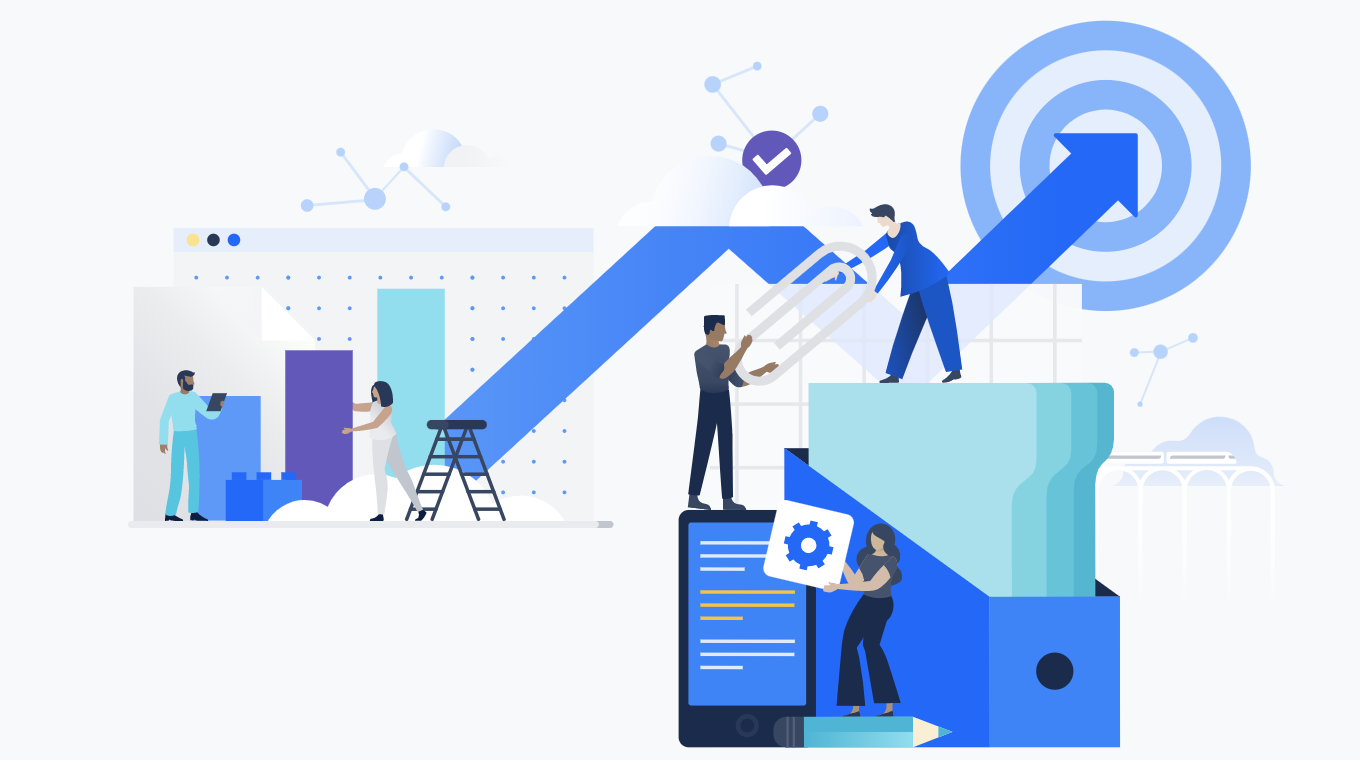Scaling AI Agent Testing from 200 Runs to 50,000: Building the Oracle You Can Trust

Most AI teams run a few dozen, maybe a few hundred, tests on their agent and declare it “working.” But reality kicks in when you need to prove reliability at tens of thousands of runs. That’s when your 100 clean passes stop being evidence and start being a liability.
This post is a blueprint for scaling AI agent testing to 50,000+ runs; not by brute force, but by layering the right testing strategy, oracles, metrics, and statistical confidence.
1. What Does “Passing at Scale” Actually Mean?
When we say an agent “works,” we usually mean “it didn’t fail in the tests we tried.” But if you run only 100 tests, that tells you almost nothing about its true failure rate.
Enter statistics:
- Critical Failure Rate (CFR): the percentage of runs where the agent breaks in a way that matters. Examples: unsafe output, privacy violation, hallucinated medical code, or a broken tool call.
- Soft Failure Rate (SFR): the percentage of runs where the agent technically completes the task but produces something incomplete, unhelpful, or formatted incorrectly.
If your CFR target is ≤0.1% (1 in 1,000), you need enough runs to actually prove that rate. With 200 tests, seeing zero failures only means “we didn’t see anything yet.” With 50,000 tests, zero failures means the true failure rate is very likely under 0.006% (thanks to the “rule of three” in binomial statistics).
At scale, you don’t just count failures; you calculate confidence intervals to show the true failure rate is below your threshold.
2. Who Judges 50,000 Runs? (The Oracle Problem)
The hardest part of scaling is not running the agent 50,000 times. It’s deciding automatically whether each output is correct or not. That’s where the oracle comes in.
An oracle is any mechanism that tells you if an output is right. At scale, a human oracle doesn’t work; you need a layered oracle pipeline that can handle tens of thousands of judgments automatically.
A. Hard Validators (Deterministic Checks)
Programmatic rules that catch obvious failures:
- JSON schema validation
- Regexes for expected formats
- Valid ICD-10 or LOINC codes in healthcare
- Safe dosage ranges, date consistency, policy filters
These are cheap, fast, and eliminate the obvious errors.
B. Metamorphic Tests (Invariants Across Transformations)
Instead of needing a “correct” answer, you check consistency:
- Paraphrase → decision stays the same
- Add irrelevant context → unchanged
- Swap word order → unchanged
- Small numeric jitter → proportionate change
These test robustness even when no gold label exists.
C. LLM-as-a-Judge (with Calibration)
When rules aren’t enough, use another model to grade with a rubric:
- Correctness (0–3)
- Safety (0/1)
- Format compliance (0/1)
- Completeness (0–2)
This only works if you calibrate it against a gold set (see Section 3).
D. Cross-Tool Agreement
If the agent calls tools (calculators, databases), compare outputs with reference engines. Disagreement = flag.
Together, these oracles mean 80–90% of runs can be judged instantly and cheaply, leaving only the hardest edge cases to AI or humans.
3. What’s a Gold Set?
A gold set is your ground truth answer key:
- Size: 500–1,000 scenarios
- Content: tricky, high-value, or high-risk cases
- Labels: dual human annotation with disagreements resolved
Why it matters:
- Calibration: Aligns your LLM-judge to human judgment
- Regression detection: Failures here mean your system degraded
- Audit evidence: Hard proof for compliance reviews
The gold set is your “do not compromise” dataset. If your oracle pipeline disagrees with it, the pipeline - not the model - is wrong.
4. Generating 50,000 Scenarios
You don’t hand-write 50,000 tests; you build a scenario factory.
A. Taxonomy-First Design
Axes to cover: intent, domain, tools required, language/register, difficulty. Ensure pairwise or 3-wise coverage to cover the space efficiently.
B. Sources of Scenarios
- Production logs (de-identified): real user flows
- Synthetic generation: templates + LLMs for variety
- Adversarial mutations: contradictions, prompt injection, tool outages
- Metamorphic siblings: 2–5 variants per base case
C. Why “15,000 Production Cases”?
This is an allocation strategy: about 30% real-world, 20% adversarial, 30% metamorphic, 20% property probes. The mix prevents over-optimizing for clean inputs.
5. The Harness: Making 50,000 Runs Reliable
At this scale, flaky infra kills you. The harness must be:
- Deterministic: temp=0, fixed seeds, replayable tool responses
- Sharded: 200–1,000 jobs in parallel
- Contract-driven: every input, output, and tool call logged with version stamps
- Stage-gated:
- Validators (fast)
- Programmatic oracles
- Metamorphic tests
- LLM-judge only when needed
This layered approach means your oracle pipeline stays fast, cheap, and reproducible.
6. What Metrics Actually Matter?
Running 50,000 tests is just noise unless you measure the right things:
- CFR (Critical Failure Rate): % of unsafe/unacceptable outputs
- SFR (Soft Failure Rate): % of degraded but usable outputs
- Hallucination Rate: unverifiable facts per 1,000 tokens
- Tool Error Rate: retries, timeouts, or broken arguments
- Task Success Rate: % of outputs that meet rubric
- Latency & Cost: p50/p95 response times, $/1k runs
- Coverage Heat-map: pass/fail across taxonomy bins
Release gates might be:
- CFR ≤ 0.1% (with 95% confidence)
- SFR ≤ 2%
- No regressions in safety/compliance bins
7. Human in the Loop
Even at 50k scale, humans still matter; but strategically:
- Label the gold set (500–1,000 cases)
- Review disagreements between judges
- Spot-check failures in high-risk bins
This ensures you trust the oracle without burning thousands of reviewer hours.
8. Failure Triage at Scale
Every fail should record why: schema violation, hallucination, tool error, or reasoning gap.
Cluster by root cause, then rank by impact × fix cost.
Instead of 2,000 scattered fails, you get a Top 10 Fix List that engineering can act on.
9. Compliance and Auditability
In regulated domains, evidence matters as much as outcomes:
- Test data must be PHI-free or safely transformed
- Immutable logs of every input, output, and decision
- Version every model, tool, rubric, and dataset
- Bundle results + confidence intervals into evidence packs for auditors
10. Example Harness (Simplified)
def run_suite(scenarios):
for batch in shard(scenarios, size=256):
results = parallel(map(execute_case, batch))
store(results)
report = analyze(results)
assert report.cfr.ci95_upper <= 0.001 # CFR ≤ 0.1%
return report
def execute_case(s):
out, trace = agent.run(s.input, seed=s.input.seed, tools=mocked_tools())
checks = run_validators(out, s) # Layer A
refs = run_reference_checks(out, s) # Layer B
meta = run_metamorphic_suite(s, out) # Layer C
judgeA = rubric_judge(out, s) # Layer D
judgeB = rubric_judge(out, s, alt=True) if judgeA.is_uncertain else None
decision = aggregate(checks, refs, meta, judgeA, judgeB)
return { "scenario": s.id, "decision": decision, "trace": trace }
Scaling QA/QE Teams for 50,000 Tests
Scaling to tens of thousands of AI agent tests isn’t about running “more of the same.” It’s about reshaping how your QA/QE function operates across people, process, and platform; and shifting the mindset of the entire engineering org.
1. People: Redefine the QA/QE Role
Traditional QA teams were staffed to run test cases or find bugs. At 50,000 runs, that model collapses. Your QA/QE team has to become system designers, not bug catchers. Their mission is to create the oracles, harnesses, and pipelines that make large-scale automated validation possible.
This requires hybrid skill sets:
- Test engineers who can write validators, schemas, and metamorphic transforms.
- Data engineers who can build scenario factories and manage gold sets.
- ML-savvy QEs who know how to calibrate LLM judges and measure drift.
And importantly: humans act as auditors, not judges. You don’t hire people to eyeball 50,000 outputs; you hire them to build trustworthy automation and only step in to review disagreements or update the gold set.
2. Process: Make Testing Part of CI/CD
Testing at this scale can’t be a quarterly fire drill. It has to be baked into the release cycle.
- Shift-left contracts. Every agent feature must ship with schemas, invariants, and test hooks so it can be validated automatically.
- Continuous evaluation. 50k runs should execute nightly or weekly across shards, not as an ad hoc project.
- Evidence packs as artifacts. Every CI run produces CFR, SFR, coverage metrics, and logs that are stored like build artifacts.
- Release gates. Code doesn’t ship unless CFR ≤ 0.1% and there are no regressions in high-risk bins.
3. Platform: Build a Testing Infrastructure that Scales
People and process aren’t enough without a platform to back them up. Scaling to 50k runs means building QE as infrastructure.
- Scenario factory. Automated generation across taxonomy dimensions, metamorphic siblings, adversarial mutations, and production sampling.
- Oracle pipeline. A layered evaluation stack: validators → programmatic checks → metamorphic oracles → rubric-based judges.
- Sharding + determinism. Tens of thousands of tests run in parallel, with fixed seeds and replayable tool calls.
- Dashboards + heatmaps. Coverage and failure patterns visible by domain, intent, and risk category.
- Cost controls. Early exits, caching, and judge-on-demand ensure scale stays affordable.
4. Scaling in Practice: Org & Ops
This isn’t about bloating the QA org; it’s about operating smarter.
- A small central QE team owns the pipeline, while every product squad contributes contracts and gold cases.
- QE runs as a platform service: push a model, get back CFR/SFR evidence.
- Adaptive sampling auto-allocates more tests to bins with wide confidence intervals.
- Continuous calibration of gold sets and LLM judges becomes as routine as updating unit tests or lint rules.
5. The Shift in Mindset
Scaling QA/QE to 50k runs is a cultural shift as much as a technical one:
- Validation becomes software: contracts and oracles, not manual checks.
- Evaluation becomes statistics: confidence intervals and regression deltas, not gut feel.
- QA artifacts become first-class citizens: gold sets, evidence packs, and coverage heatmaps are treated like code, versioned and preserved in CI/CD.
At this scale, QA/QE isn’t a side process; it’s the backbone of trust in your AI system.
Testing an AI agent 200 times is a demo. Testing it 50,000 times with layered oracles, statistical gates, and real-world coverage is proof.
Scaling to this level isn’t about “more tests;" it’s about building the oracle pipeline that can judge those tests reliably.
If you want your AI agent to leave the lab and survive the real world, 50,000 tests isn’t overkill. It’s the new normal.
👉 Want more posts like this? Subscribe and get the next one straight to your inbox. Subscribe to the Blog or Follow me on LinkedIn



Comments ()